Edible Gardening
Discover the basics of edible gardening, from planting to sustainability, and learn how to cultivate your own fresh produce.
Growing your own food is a remarkable journey that connects you with nature’s rhythm and adds fresh flavors to your meals. The practice of edible gardening is more than just a hobby; it’s a lifestyle choice that fosters sustainability and mindfulness. In this article, we’ll explore what edible gardening entails, provide some guidance on getting started, and offer examples along the way.
Understanding Edible Gardening
At its core, edible gardening is about growing plants that you can eat. This can range from fruits and vegetables to herbs and edible flowers. The goal is to cultivate a small part of your own food supply, reducing your carbon footprint and enhancing your diet with fresh, home-grown produce.
Imagine having tomatoes, basil, and lettuce right at your fingertips—ready to be transformed into a delicious salad. With edible gardening, this isn’t just a daydream but a feasible reality.
Getting Started
Embarking on your edible gardening adventure may feel overwhelming, but starting small can make it more manageable. Whether you have a sprawling backyard or just a balcony, the key is to work with your available space and resources.
-
Choose the Right Location: Most edible plants need plenty of sunlight, typically 6 to 8 hours a day. Survey your space to determine the best spot, keeping in mind the amount of sunlight and access to water.
-
Plan Your Garden: Begin with the vegetables and herbs you love to eat. Common beginner-friendly plants include lettuce, green beans, cherry tomatoes, and herbs like basil, cilantro, and parsley.
-
Soil Preparation: Good soil is fundamental to a plentiful garden. If you’re working with poor soil, consider using raised beds or containers where you can control the soil quality. Adding compost can greatly improve the fertility and structure of your soil.
-
Planting: Different plants have different needs—some prefer cooler temperatures, while others thrive in warmth. Referring to a seasonal planting guide, such as those provided by local agricultural extensions, can assist in planting at the right time.
Examples of Edible Plants to Grow
For those residing in temperate zones, here are a few practical suggestions:
-
Tomatoes: Renowned for their versatility, tomatoes can be used in salads, sauces, and many dishes. Cherry tomatoes are a delightful option for beginners due to their high yield and minimal space requirements.
-
Lettuce: Fast-growing with various types to choose from, lettuce is ideal for fresh and nutritious salads. It can be planted in rows or densely in small beds.
-
Herbs: Basil, mint, rosemary, and lavender are excellent choices. They add flavor to your meals and can be grown in pots or tucked into small garden spaces.
-
Radishes: Known for rapid growth, radishes can go from seed to table in as little as a month. They’re perfect for adding a spicy crunch to dishes.
Sustainable Practices
Adopting sustainable gardening practices helps maintain the health of your garden and the surrounding environment. Here are some techniques to consider:
-
Companion Planting: Planting certain plants together can deter pests and enhance growth. For instance, marigolds are often planted with tomatoes to ward off nematodes.
-
Rainwater Harvesting: Collecting rainwater is an eco-friendly way to water your garden and reduce reliance on municipal resources.
-
Organic Pest Control: Natural solutions, such as neem oil or diatomaceous earth, can help keep pests at bay without harming beneficial insects or the soil.
Benefits of Edible Gardening
There are many rewards to cultivating an edible garden, including:
-
Freshness and Flavor: Produce you pick from your own garden is often more flavorful than store-bought alternatives due to its freshness.
-
Economic Savings: Although the initial setup may have costs, growing your own food can lead to savings over time.
-
Environmental Impact: By reducing the need for commercially-grown produce, you help minimize the carbon footprint associated with food transportation and packaging.
Conclusion
Edible gardening is a gentle yet rewarding pursuit that brings multiple benefits. It doesn’t require perfection or expert knowledge, just a desire to reconnect with nature and an openness to learning from your plants.
Whether you grow a single herb on a windowsill or transform your backyard into a thriving vegetable plot, every bit of green makes a difference. We hope this guide inspires you to get your hands dirty, savor the taste of your harvest, and enjoy the journey of edible gardening. Embrace the imperfections, celebrate the successes, and cherish the moments of quiet connection with the earth.
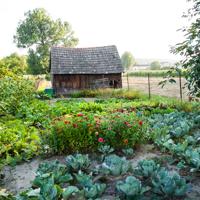
Explore sustainable gardening practices that promote environmental health and enhance your garden's productivity.
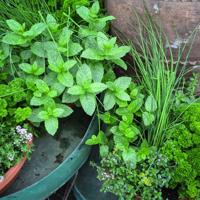
Discover how to grow and use edible flowers in your culinary creations, adding beauty and flavor to your meals.
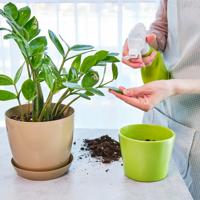
Explore the gentle journey of indoor gardening, bringing sustainability and beauty into your living space with easy-to-care-for plants.
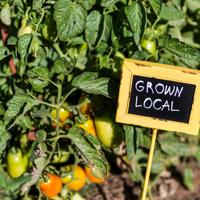
Explore a variety of seasonal recipes that highlight fresh produce from your garden, fostering a garden-to-table lifestyle.

Explore the essentials of container gardening, from selecting the right pots to choosing the best plants for your space.
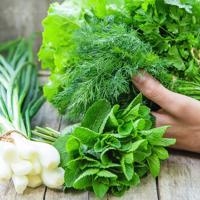
Explore the art of using edible flowers in your cooking with this guide featuring recipes and practical tips that enhance your dishes with color and flavor.
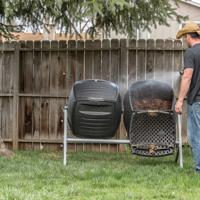
Discover the principles of permaculture gardening and how they can enhance your sustainable gardening practices.
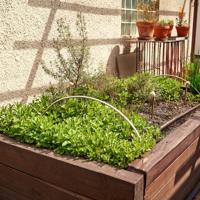
Learn how to establish a flourishing perennial herb garden that provides fresh herbs for your kitchen while promoting sustainability.